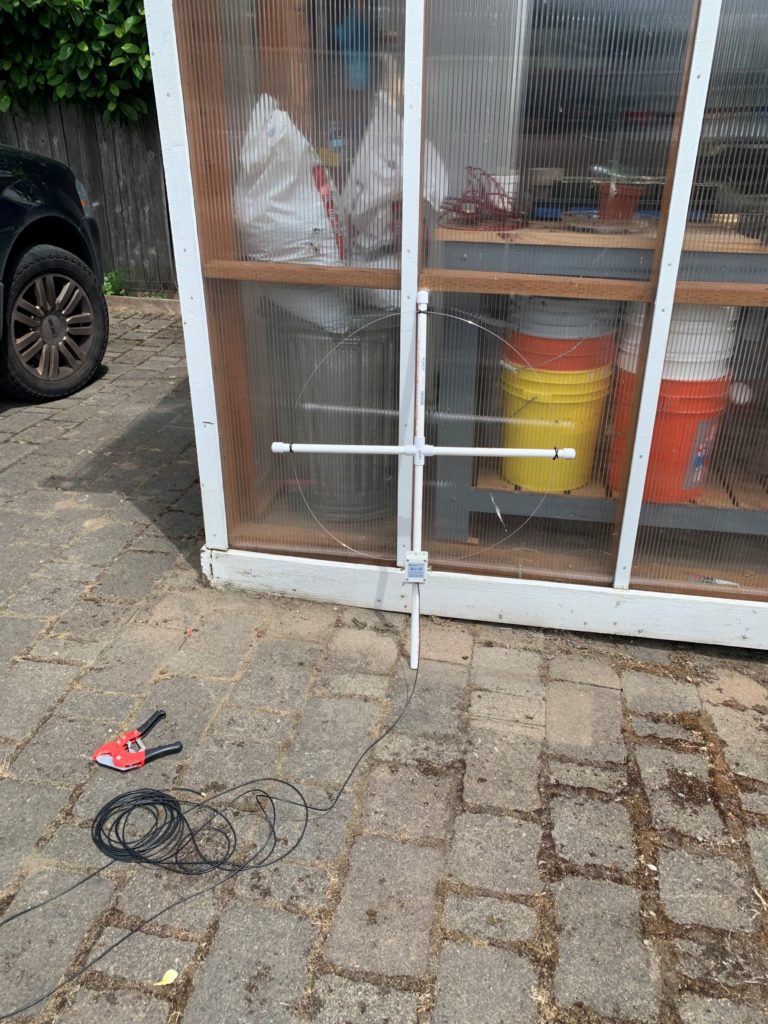In my quest to get better AM reception, I ran across this very affordable antenna setup. First, I am going to beta test this versus the traditional loop antenna (the one that came with the receiver). If all goes well, I will permanently mount this outside. If this setup doesn’t work, I have one more play, there is another antenna available from CCrane that I might try.
I actually didn’t really realize this, but the AM band is the same frequency of some shortwave bands. Signals on the AM band range from 530 – 1710 kHz. This antenna is rated for 0.5 – 30 mHz (or 500 – 30,000 kHz) so it should work beautifully. This antenna is specifically intended for shortwave reception, conveniently AM radio is in the appropriate range.

My first test was to simply assemble the antenna and connect it. I did a quick scan through the spectrum and picked up 20 or so channels. That was a positive sign.
Now that I knew it was going to work, I started researching cable extensions. This particular antenna is built with a 10m (33ish feet) of cable. I haven’t measured anything, but I am probably going to need 100 feet or more. In this case, my preference would be to build my own cable but I need the proper tools to do that. The connection is called an RJ-476 which looks like a miniature TV cable end.
Another problem that I had to solve for is my radio has two wire connector input, not an RJ-476. As you might know, with a cable there is a conductor and a ground. The conductor is the center wire but the ground comes off the shielding. Typically, the ground connection is made when you screw the connector in place. Now we are talking about solder and other things. Fortunately I found a cable that splits for appropriate use. The lesson is know how your are going to connect to your radio.
It’s going to be awhile before my priorities are going to align and I actually mount this antenna on the roof. I would hope to get it done before the end of summer. Regardless, I built a frame for the antenna because the loop is so floppy. Since AM signals are directional, the frame allows for a much easier ‘tuning’ of the antenna since it is so floppy.

My hope is that I get the antenna out of the basement and up on the roof I won’t have as much as a need for directional tuning. If that turns out to not be the case, then I have a couple stations in mind that I have not been able to get with any current antenna setup and I will be happy.
End Your Programming Routine: It must be that nobody listens to AM radio through their stereo tuner. I am speculating that the majority of AM listening must be in the car. I am rather surprised by the lack of antenna choices (or information) anywhere. Maybe there is a business opportunity here? I will be happy to eventually tune into the local university sports though.
Recent Comments